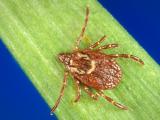Nov 29, 2011
AP report: US to pay $2.5 million to widow of anthrax victim
The US government, without admitting any fault, has agreed to pay $2.5 million to the widow and family of a Florida photo editor who died in the 2001 anthrax letter attacks, the Associated Press (AP) reported today. The story said the AP obtained a document saying that Maureen Stevens will drop all other claims stemming from the death of her husband, Robert Stevens. She had filed a lawsuit in 2003 asserting that the government failed to stop someone at the US Army Medical Research Institute of Infectious Diseases (USAMRIID) in Maryland from creating the Bacillus anthracis preparation that killed five people and sickened 17 others. The settlement names Stevens and her three grown children and says that attorneys' fees of no more than 25% will be paid out of the $2.5 million, according to the story. Robert Stevens, who died Oct 5, 2001, worked for American Media Inc. in Boca Raton, Fla., publisher of three tabloid
newspapers. The FBI concluded in 2008 that the anthrax attacks were perpetrated solely by USAMRIID scientist Bruce Ivins, who committed suicide as the agency was preparing to accuse him. Controversy over the FBI's conclusion in the case has persisted, with some scientists questioning certain of the agency's scientific findings. The AP story said lawsuits brought by other victims of the 2001 attacks have been dismissed, but at least one is still in the appeals stage.
Nov 29 AP story
UK reports high prevalence of norovirus in oysters
Three quarters of oysters from UK growing beds tested positive for norovirus, though half of those had low levels of the pathogen, according to a report today from the UK Food Standards Agency (FSA). The health impact of these findings, however, is difficult to assess because available technology cannot differentiate between infectious and noninfectious norovirus material within oysters, the agency said in a press release. Researchers in this first-of-its-kind UK study also found a marked seasonality to norovirus levels, with 90.0% of samples taken between October and March testing positive, compared with 62.4% of those taken between April and September. The annual average was 76.2%, but 52.1% of those samples were below the limit of quantification (less than 100 copies/gram), whereas 1.4% of the positive samples measured greater than 10,000 copies per gram. Andrew Wadge, FSA chief scientist, said in the release, "Though oysters are
traditionally eaten raw, people should be aware of the risks involved in eating them in this way. The Agency advises that older people, pregnant women, very young children, and people who are unwell should avoid eating raw or lightly cooked shellfish."
Nov 29 FSA press release
Nov 29 FSA report summary, with link to full report
Mosquito onslaught may predict tularemia cases in northern forests
High levels of mosquitoes in tularemia-endemic boreal forests may lead to outbreaks of tularemia in people, according to a research team from Sweden. The investigators analyzed data from 1981 through 2007, during which 370 people in Dalarna County, Sweden, contracted the disease, which is caused by the Francisella tularensis bacterium. Of the cases, 94% occurred during seven summer outbreaks, and disease transmission was concentrated along area rivers. The researchers found mosquito abundance to be correlated with the annual number of human cases, with predicted peaks in mosquito populations in late summer consistently preceding the median onset of human tularemia.
Nov 28 J Infect Dis abstract




















